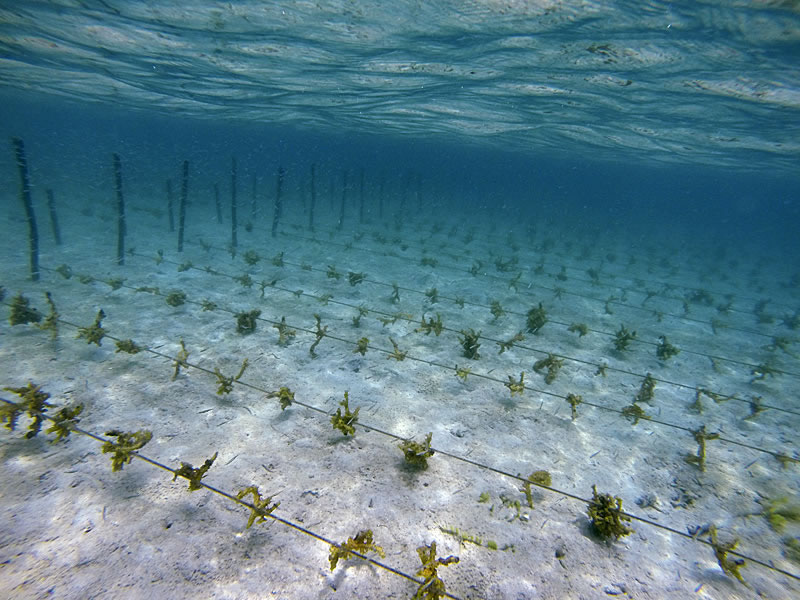Aquaculture
Description
Fish are an important and healthy source of protein for humans. 20 kg of fish are consumed per capita per year in the United States, and as much as 50 kg per capita per year in countries like China. Globally, fish consumption has increased 3-fold since the 1960s; but this increase has not been supported by increases in capture of wild fish stocks, but only possible by increases in aquaculture.
<figure class="wp-caption aligncenter" id="attachment_1160" style="width: 660px;"> <figcaption class="wp-caption-text" id="caption-attachment-1160">The above figure shows the contributions of capture fisheries and aquaculture to fish for human consumption in kg/capita; the contribution of aquaculture has risen greatly, while capture fisheries has remained relatively stable. From: FAO. 2018. The State of World Fisheries and Aquaculture 2018: Meeting the sustainable development goals. Rome. Licence: CC BY-NC-SA 3.0 IGO.</figcaption></figure>
<figcaption class="wp-caption-text" id="caption-attachment-1160">The above figure shows the contributions of capture fisheries and aquaculture to fish for human consumption in kg/capita; the contribution of aquaculture has risen greatly, while capture fisheries has remained relatively stable. From: FAO. 2018. The State of World Fisheries and Aquaculture 2018: Meeting the sustainable development goals. Rome. Licence: CC BY-NC-SA 3.0 IGO.</figcaption></figure>
Aquaculture, or mariculture when referring to marine species specifically, is the husbandry of aquatic organisms for human use and consumption. Aquaculture currently accounts for nearly 50% of global fisheries production, up from just 26 percent in 2000. The total yield from wild fish stocks has leveled off in recent years at around 90 million tons annually, approaching what may be the maximum sustainable yield of wild stocks.
<figure class="wp-caption aligncenter" style="width: 1260px;"><figcaption class="wp-caption-text">Oysters growing in cages arranged in rows on tidal flats in New Jersey. Image: James M. Fiorendino</figcaption></figure>
Though the major endeavor of aquaculture is to cultivate organisms for human consumption, many organisms are grown for other commercial purposes, in particular aquatic plants. Aquaculture now accounts for nearly all of the 31.2 million metric ton annual yield of aquatic plants, which are used in animal feeds, biotechnology, cosmetics, pharmaceuticals, and food.
<figure class="wp-caption aligncenter" id="attachment_1161" style="width: 660px;"> <figcaption class="wp-caption-text" id="caption-attachment-1161">Relative production of different marine animals and plants through aquaculture, in millions of tonnes. From: FAO. 2018. The State of World Fisheries and Aquaculture 2018 – Meeting the sustainable development goals. Rome. Licence: CC BY-NC-SA 3.0 IGO.</figcaption></figure>
<figcaption class="wp-caption-text" id="caption-attachment-1161">Relative production of different marine animals and plants through aquaculture, in millions of tonnes. From: FAO. 2018. The State of World Fisheries and Aquaculture 2018 – Meeting the sustainable development goals. Rome. Licence: CC BY-NC-SA 3.0 IGO.</figcaption></figure>
Though aquaculture is a growing industry, there are many issues that must be overcome to ensure future aquaculture operations are sustainable. In the following series of episodes, On the Ocean will introduce several species of aquatic plants and animals grown by humans for a variety of purposes, the methods behind aquaculture production, and some of the challenges associated with expanding aquaculture operations in the future.
<figure class="wp-caption aligncenter" style="width: 800px;"> <figcaption class="wp-caption-text">Seaweed farm in the Solomon Islands, photo by Amy Heemsoth, from: https://www.livingoceansfoundation.org/sustainable-seaweed-farming-part-1/</figcaption></figure>
<figcaption class="wp-caption-text">Seaweed farm in the Solomon Islands, photo by Amy Heemsoth, from: https://www.livingoceansfoundation.org/sustainable-seaweed-farming-part-1/</figcaption></figure>
This has been On the Ocean, a program made possible by the Department of Oceanography and a production of KAMU FM on the campus of Texas A&M University in College Station. For more information and links, please go to ocean.tamu.edu and click On the Ocean.
Featured Image: Rick Decker, from Lester et al. 2018, https://www.pnas.org/content/115/28/7162
Script Author: James M. Fiorendino
Contributing Professor: Dr. Lisa Campbell





